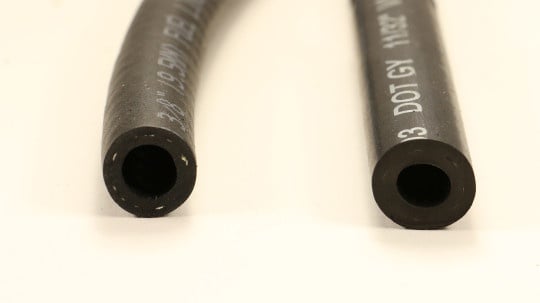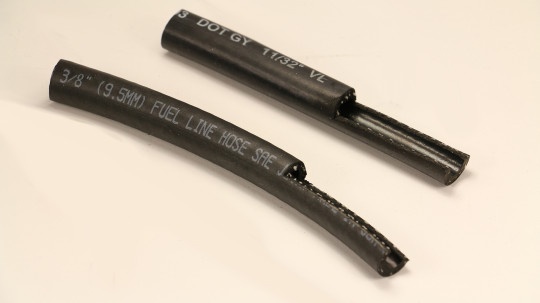Because we are gear heads, we take every chance to look under the hoods during car shows and swap meets. One of our guys just got back from a big show and he was surprised by how a mistake he saw so many times. To use his words, “How could something like this be wrong on so many vehicles?”
Since we are in the brake business, we notice more things when it comes to a vehicle’s braking system than most classic car enthusiasts. Kind of like the house painter that can’t walk into a room without checking the paint line between the wall and the ceiling. So what was it that our resident gear head noticed?
About half of the vehicles he saw had a power brake booster with the wrong type of hose going from the engine vacuum source to the brake booster
This discovery got us curious so we did an experiment. When a booster/master combo is purchased from Master Power Brakes, we include several feet of the proper vacuum hose with each package. Getting back to our question and our experiment, we wondered what happens when the average week-end garage guy goes to the local parts store to buy brake vacuum hose. We went to a parts store and asked the counter guy for “3/8 vacuum hose” assuming that is how most people frame their request. The counter guy produced a 3/8” hose, per our request, but it wasn’t vacuum hose. Why does that matter you ask? Let’s explain.
From the outside, fuel hose and vacuum hose look similar. Both hose types are made from black rubber and both have an inner lining. Based on this, they should be the same, right? Wrong! Fuel hose is built to resist expansion so it doesn’t burst under heat and pressure. That is opposite of what you are looking for in a vacuum hose. Vacuum hose needs to resist sucking shut. As your engine is running and creating that vacuum on the booster, it is going to try and close the hose. If you are mistakenly using fuel hose, there is a good chance your hose is closing shut. This creates a very inconsistent and possibly hard pedal.
 From this angle, you can see that the fuel line on the left has a thinner wall than the vacuum hose on the right.
From this angle, you can see that the fuel line on the left has a thinner wall than the vacuum hose on the right.
So how do you avoid the counter guy selling you the wrong hose? When you go to your local parts store,remember to ask for 11/32” vacuum hose. As an industry standard, vacuum hose is only measured in thirty seconds of an inch. Therefore, you will only see 7/32”, 9/32”, or 11/32” when looking for vacuum hose.
Now, if you are driving a hot rod with a power brake booster, we suggest walking out to the garage right now and popping the hood to see if you have it right. What you never knew might be a problem could be one!

